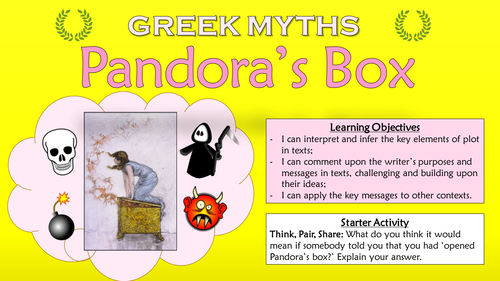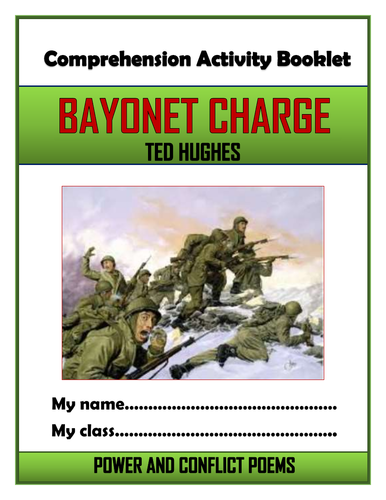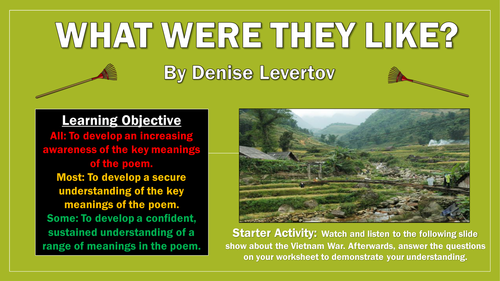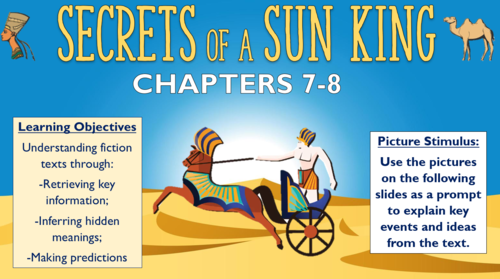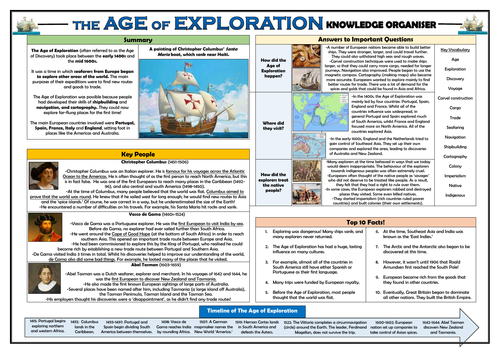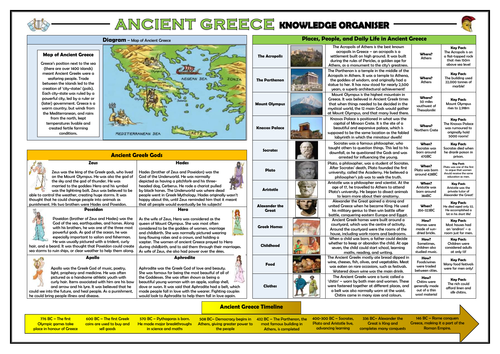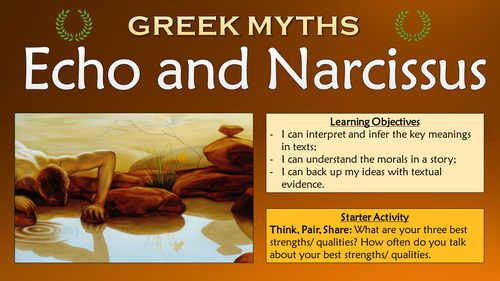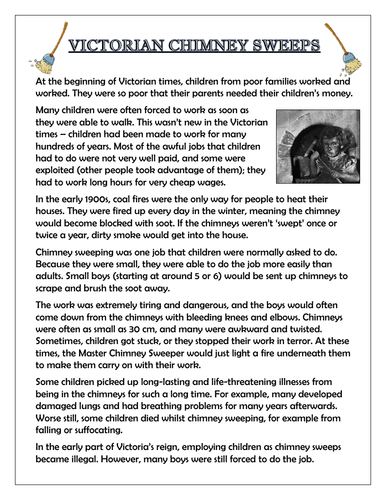
3k+Uploads
1905k+Views
2237k+Downloads
History

Greek Myths: Pandora's Box
This interesting and highly-stimulating lesson enables students to gain a clear understanding of the key meanings in the Greek Myth ‘Pandora's Box.’ Through engagement with the story, students learn to interpret and infer the key elements of plot in texts, comment upon the writer’s purposes and messages in texts, challenging and building upon their ideas, and apply the key messages to other contexts.
The lesson follows a clear, logical, bite-size learning journey, which guides students towards differentiated learning objectives. Over the course of this journey, they become able to:
- Understand the phrase 'opening Pandora's Box' and apply it to modern contexts;
- Read the story 'Pandora's Box' and interpret the key meanings;
- Summarise the key events of the story through a storyboard;
- Identify, explain, and analyse the writer's key messages in 'Pandora's Box;'
- Engage deeply with the text by challenging and building upon the ideas/messages raised by the writer;'
- Test their understanding of the story by creating their own recreations;
- Peer assess each other's learning attempts.
This resource pack includes:
- A visually engaging whole-lesson PowerPoint presentation;
- Paper copies and online links to a copy of Pandora's Box;
- Pandora's Box Storyboard;
- The Writer's Message Worksheet;
- A detailed lesson plan, complete with what the teacher and students should aim to achieve at each stage of the lesson.
All images are licensed for commercial use, and are cited on the final slide of the PowerPoint.

Jane Eyre - Social and Historical Context!
This engaging and informative lesson enables students to gain a detailed insight into the social and historical context of Charlotte Brontë’s Jane Eyre. In particular, students learn about Brontë’s life, class, religion, love and health in the Victorian era – key themes throughout the novel. They then make clear and sustained links between the features of context and the text.
The lesson follows a step-by-step learning journey, in which students learn through:
Playing a fun and interactive quiz about the life of Charlotte Bronte;
Completing carousel activities in groups to learn about the key features of religion, class, love, reputation, and health in the Victorian era;
Linking their understanding of context to the key elements of the text;
Peer assessing each other’s learning attempts.
Included is:
Whole lesson PowerPoint - colourful and comprehensive;
All resources for the carousel activities, including sheets needed for ‘Religion Researchers’, ‘Ways to Die in Victorian Society’, and ‘Class and Gender Venn Diagrams.’
Linking the novel to social/historical context template;
Comprehensive lesson plan.
There are also opportunities for group learning, peer assessment, and whole class discussion. These resources were originally taught to GCSE students, but with subtle adaptations they have also been used with both younger and older (up to A Level) students.
Please note that one of the carousel activities requires internet access.
All images are licensed for commercial use, and image rights are listed on the last page of the presentation.

Mary I - Knowledge Organiser!
This clear, detailed and visually-appealing resource offers a complete reference point for children learning about Mary I. It is particularly useful for those completing a history study of the monarchy in England, the Tudor dynasty or significant individuals in historical societies. It contains comprehensive sections entitled:
Overview;
Times in Her Life;
Important Vocabulary;
Mary I Timeline;
Answers to the Important Questions;
Top Ten Facts.
The resource is designed to be printed onto A3, and is provided as both a PDF and a Word version (so that you can edit if you want to). All images used are licensed for commercial use.

The Battle of Britain - History Knowledge Organiser!
This clear, detailed and visually-appealing resource offers a complete reference point for students learning or revising knowledge relating to the Battle of Britain. There are comprehensive sections on:
-British of Britain Overview;
-Major Events;
-Key People, Places and Equipment;
-Important Facts;
-Timeline;
-Key Vocabulary.
The resource is designed to be printed onto A3 or A4, and is provided as both a PDF and a Word version (so that you can edit if you want to). All images used are licensed for commercial use and are cited on a separate document (included). It is most suitable for students in upper KS2, but could also be used with lower KS3 students.
Bundle Sale

Private Peaceful Big Bundle!
THIS BUNDLE CONTAINS ALL OF THE PRIVATE PEACEFUL LESSONS, IN ADDITION TO THE COMPREHENSION BOOKLET, THE KNOWLEDGE ORGANISER AND THE POINTLESS GAME!
This engaging, varied, and informative collection of lessons is designed to help students gain understanding, assessment skills, and key interpretations of Michael Morpurgo’s’ ‘Private Peaceful.’ Made up of a wide-range of interesting and exciting lessons, students should complete the lessons having gathered vital skills in: interpreting the significant meanings of the text, understanding the writer’s ideas within the text, identifying the traits of key characters, settings, and themes, understanding dramatic and language devices, and relating the text to its social and historical context.
Stimulating, visual, and easily adaptable, these lessons provide suggested learning objectives and outcomes for students of a wide-range of abilities - The vast majority of tasks are differentiated to allow for different abilities and needs in your classroom. Each lesson loosely follows this logical learning journey to ensure that students learn in bite-size steps:
Engaging
Defining/ Understanding
Identifying/Remembering
Analysing/ Creating
Peer or self evaluating.
All of the lessons are interactive, employ a variety of different teaching and learning methods and styles, and are visually-engaging. Activity resources, worksheets, and lesson plans are all provided.
Bundle Sale

A Christmas Carol Huge Bundle!
THIS BUNDLE CONTAINS ALL OF THE ‘A CHRISTMAS CAROL’ LESSONS, IN ADDITION TO THE 30-PAGE COMPREHENSION BOOKLET, THE KNOWLEDGE ORGANISER, AND THE POINTLESS GAME!
This engaging, varied, and informative scheme of learning is designed to help students gain understanding, assessment skills, and key interpretations of Charles Dickens’ A Christmas Carol. Made up of a wide-range of interesting and exciting lessons, students should complete this scheme having gathered vital skills in: interpreting the significant meanings of the text, understanding the writer’s ideas within the text, analysing key characters, settings, and themes, and understanding Dickens’ language devices.
Stimulating, visual, and easily adaptable, these lessons provide suggested learning objectives and outcomes for students of a wide-range of abilities - The vast majority of tasks are differentiated to allow for different abilities and needs in your classroom. Each lesson loosely follows this logical learning journey to ensure that students learn in bite-size steps:
- Engaging
- Defining/ Understanding
- Identifying/Remembering
- Analysing/ Creating
- Peer or self evaluating.
All of the lessons are interactive, employ a variety of different teaching and learning methods and styles, and are visually-engaging. Resources, worksheets, and lesson plans are all provided.
Bundle Sale

Great Expectations Huge Bundle!
THIS BUNDLE CONTAINS ALL OF THE ‘GREAT EXPECTATIONS’ LESSONS, IN ADDITION TO THE KNOWLEDGE ORGANISER, THE 30-PAGE COMPREHENSION BOOKLET, AND THE POINTLESS GAME!
This engaging, varied, and informative scheme of learning is designed to help students gain understanding, assessment skills, and key interpretations of Charles Dickens’ ‘Great Expectations.’ Made up of a wide-range of interesting and exciting lessons, students should complete this scheme having gathered vital skills in: interpreting the significant meanings of the text, understanding the writer’s ideas within the text, analysing key characters, settings, and themes, and understanding Dickens’ language devices.
Stimulating, visual, and easily adaptable, these lessons provide suggested learning objectives and outcomes for students of a wide-range of abilities - The vast majority of tasks are differentiated to allow for different abilities and needs in your classroom. Each lesson loosely follows this logical learning journey to ensure that students learn in bite-size steps:
Engaging
Defining/ Understanding
Identifying/Remembering
Analysing/ Creating
Peer or self evaluating.
All of the lessons are interactive, employ a variety of different teaching and learning methods and styles, and are visually-engaging. Resources, worksheets, and lesson plans are all provided.

Introduction to the Anglo-Saxons - Double Lesson!
In this engaging lesson, children are provided with an introductory understanding of the Anglo-Saxons, through learning:
-who the Anglo-Saxons were and when they lived;
-how they invaded and inhabited England;
-the names and basic features of the seven Anglo-Saxon kingdoms.
The learning is guided by a clear and colourful PowerPoint presentation, which guides students through the following step-by-step journey:
-Knowledge harvesting - gauging what children already know about the Anglo-Saxon era, and gathering what else they would like to know;
-Answering recall questions based upon the areas of history that they have learnt previously that are pertinent to this topic;
-Defining who the Anglo-Saxons were and when they lived;
-Watching an informative video providing some of the basic facts about Anglo-Saxon life, and then answering questions to show their understanding;
-Learning about how they invaded England, and after much fighting split the land into seven kingdoms;
-Completing a map-based activity to show where the kingdoms were and who lived there;
-Completing plenary activities to demonstrate their understanding of each of the concepts learnt in the lesson;
-Self-reflecting on the extent to which they feel they have met the learning objective.
Included is the comprehensive PowerPoint presentation (around 20 slides), the map template (in both Word and PDF) and the hyperlink to the video.
In the past, I have used this lesson with children in upper KS2 (years 5 and 6) - the key learning is aligned with curriculum expectations for history. All images are licensed for commercial use.

Bayonet Charge Comprehension Activities Booklet!
This 16-page resource booklet contains a wide range of challenging and engaging comprehension activities for use throughout the reading of Ted Hughes’ power and conflict poem 'Bayonet Charge.’ Teachers have found the activities particularly useful throughout teaching, or for exam revision or guided reading sessions. They are perfect for aiding the progress of students towards meeting the key English Literature assessment objectives - suitable for all examining bodies. Students have found these resources extremely engaging, and it is clearly highlighted within each task regarding which assessment strands the task is designed to demonstrate.
It is provided in both Word (to allow for easy editing) and PDF (to ensure for consistency of formatting between computers).
Activities within the booklet include (amongst many others):
‘Analysing Context’ - helping students to ‘Show understanding of the relationships between texts and the contexts in which they were written.’
‘Analysing Subject Matter, Language and Structure’ - to help students to ‘Analyse the language, form and structure used by a writer to create meanings and effects, using relevant subject terminology where appropriate.’
‘Diary Entry’ - to help students to ‘Use a range of vocabulary and sentence structures for clarity, purpose and effect, with accurate spelling and punctuation. Make an informed personal response, recognising that other responses to a text are possible and evaluating these.’
‘The Speaker’ - to help students to ‘Read, understand and respond to texts. Students should be able to: maintain a critical style and develop an informed personal response use textual references, including quotations, to support and illustrate interpretations.’

What Were They Like? Denise Levertov - Vietnam War Poem
These resources enable students to build their knowledge of the content, language, and structure of Denise Levertov’s Vietnam War poem ‘What Were They Like?’ In particular, students learn about the historical context of the Vietnam War. They also learn how features of language and structure aid the impact of the poem.
Students learn through a logical and step-by-step learning journey, including:
-Exploring the historical concept of the Vietnam War;
-Understanding key information about Denise Levertov and her life;
-Reading and interpreting the poem;
-Understanding the poem, with a particular emphasis upon the content, language, and structural features;
-Writing an extended analysis piece based upon how Levertov gets across her feelings about war in the poem, through the use of language and structure;
-Peer assessing each other's learning attempts.
Included is:
- Whole lesson PowerPoint - colourful and substantial; (including hyperlink to a reading of the poem)
- Copy of poem;
- Structural devices worksheet
- Analysis template with in-built success criteria for creating well-structured responses;
- Comprehensive lesson plan.
There are also opportunities for group learning, peer assessment, and whole class discussion. This was originally taught to middle-ability year 9/10 groups, but can easily be differentiated for groups of different ages and abilities.
All images are licensed for commercial use, and image rights are listed on the last page of the presentation.

Secrets of a Sun King - Chapters 7 and 8 - Double Lesson!
This engaging and thought-provoking double-lesson resource aids students in developing a secure understanding of the chapters 7 to 8 of Emma Carroll’s 'Secrets of a Sun King.’ In this section of the text, Lil reads the translation detailing Kyky’s chariot accident, and learns that her parents have been hiding a secret from her about a baby boy born in 1899.
The comprehensive and colourful PowerPoint presentation enables students to understand the text through:
-Retrieving information;
-Inferring and deducing hidden meanings;
-Making predictions based on clues in the text.
The sessions include a range of retrieval, vocabulary, inference, explanation and deeper thinking activities. A clear, colourful and comprehensive PowerPoint presentation guides students through the learning.
There’s a lot in the session (18 slides in total) so I would recommend breaking into two lessons. The lessons are most suitable for children in key stage 2, (they were originally used for those in years 4 and 5).
Bundle Sale

Greek Myths: Big Lesson Bundle! (All Lessons, Resources, Plans, Everything!)
This engaging, varied, and informative scheme of learning is designed to help students gain a deep understanding of a number of traditional Greek Myths. Made up of a wide-range of interesting and exciting lessons, students should complete this scheme having gathered vital skills in: interpreting the significant meanings of the text, understanding the writer’s key messages, identifying the traits of key characters, settings, and themes, understanding language devices, and relating the texts to their social and historical contexts.
Stimulating, visual, and easily adaptable, these lessons provide suggested learning objectives and outcomes for students of a wide-range of abilities - The vast majority of tasks are differentiated to allow for different abilities and needs in your classroom. Each lesson loosely follows this logical learning journey to ensure that students learn in bite-size steps:
- Engaging
- Defining/ Understanding
- Identifying/Remembering
- Analysing/ Creating
- Peer or self evaluating.
All of the lessons are interactive, employ a variety of different teaching and learning methods and styles, and are visually-engaging. Resources, worksheets, and lesson plans are all provided.

Ancient Greek Clay Pottery - Knowledge Organiser!
This clear, detailed and visually-appealing resource offers a complete reference point for students learning about Ancient Greek Clay Pottery as a part of their art and design study. This was originally used alongside a history study of the Ancient Greeks.
It contains comprehensive sections on:
-Overview;
-Styles and Techniques;
-Significant Places/ Artists;
-Creative Ideas and Examples;
-Key Vocabulary;
-Timeline of Ancient Greek Clay Pottery.
This resource can be adapted for all ages, but was originally designed for KS2 children.
The resource is designed to be printed onto A3, and is provided as both a PDF and a Word version (so that you can edit if you want to). All images used are licensed for commercial use and are cited on a separate document (included).

The Age of Exploration - Knowledge Organiser!
This clear, detailed and visually-appealing resource offers a complete reference point for students learning or revising knowledge relating to the The Age of Exploration (sometimes known as The Age of Discovery). It contains comprehensive sections on:
The Age of Exploration Overview;
Overview;
Key People (Christopher Columbus, Vasco de Gama, Abel Tasman);
The Age of Exploration Timeline;
Answers to the Important Questions;
Key Vocabulary;
Top Ten Facts.
The resource is designed to be printed onto A3, and is provided as both a PDF and a Word version (so that you can edit if you want to). All images used are licensed for commercial use and are cited on a separate document (included). It is most suitable for students in KS2/ lower KS3. Another version of this organiser is available for younger children.

Elizabeth Fry Knowledge Organiser!
This clear, detailed and visually-appealing resource offers a complete reference point for children learning about Elizabeth Fry. It is particularly useful for those completing a history study of ‘Significant Individuals.’ It contains comprehensive sections entitled:
Overview;
Times in Her Life;
Important Vocabulary;
Elizabeth Fry Timeline;
Answers to the Important Questions;
Top Ten Facts.
The resource is designed to be printed onto A3, and is provided as both a PDF and a Word version (so that you can edit if you want to). All images used are licensed for commercial use.

Aztec Sacrifice - Whole Class Reading Session!
This whole class reading session aims to develop children’s fluency and comprehension skills through reading a key extract from Fiona McDonald’s ‘You Wouldn’t Want to be an Aztec Sacrifice!’
The reading is followed by a series of activities aiming to develop children’s VIPERS skills: vocabulary, inference, prediction, explanation, retrieval, sequencing and summarising. It also contains a vocabulary check immediately after the extract is read to clarify any unfamiliar/ difficult language.
The tasks are comprised of quick-check questions, solo thinking, pair/ group discussions and deeper thinking activities. The extract needed is provided as a PDF and a link to a web-based version is also included on the first slide.
The session is best suited for children in KS2, although with minor adaptations it could feasibly be used with slightly younger and older age groups.

Ancient Greece Knowledge Organiser!
This clear, detailed and visually-appealing resource offers a complete reference point for students learning or revising knowledge relating to the Ancient Egyptians. It contains comprehensive sections on:
Ancient Greece map (annotated);
Ancient Greek Gods;
Ancient Greece timeline;
Ancient Greek people;
Ancient Greek places;
Ancient Greek daily life.
The resource is designed to be printed onto A3, and is provided as both a PDF and a Word version (so that you can edit if you want to). All images used are licensed for commercial use and are cited on a separate document (included). It is most suitable for children in KS2 and KS3.

Greek Myths: Echo and Narcissus
This interesting and highly-stimulating lesson enables students to gain a clear understanding of the key meanings in the Greek Myth ‘Echo and Narcissus.’ Through engagement with the story, students learn to interpret and infer the key meanings in the text, understand its predominant morals, and back up their ideas with textual evidence.
The lesson follows a clear, logical, bite-size learning journey, which guides students towards differentiated learning objectives. Over the course of this journey, they become able to:
- Define the key term 'moral' and identify the morals in popular tales;
- Read the story 'Echo and Narcissus' and interpret the key meanings;
- Identify, explain, and analyse the moral of the story in 'Echo and Narcissus';
- Engage deeply with the text by inferring the thoughts and feelings of the key characters;
- Test their understanding of the story by answering an exam-style comprehension question.
-Peer assess each other's learning attempts.
This resource pack includes:
- A visually engaging whole-lesson PowerPoint presentation;
- Paper copies and online links to the text;
- Resources for 'In Your Shoes' Task;
- Bloom's Taxonomy worksheet;
- A logically scaffolded essay template;
- A detailed lesson plan, complete with what the teacher and students should aim to achieve at each stage of the lesson.
All images are licensed for commercial use, and are cited on the final slide of the PowerPoint.

Greek Myths: Theseus and The Minotaur
This engaging and detailed lesson enables students to gain a deep understanding of the Greek Myth 'Theseus and The Minotaur.' In doing so, students learn to interpret and infer the key meanings in a myth, analyse the descriptive language in a myth, and use descriptive language to describe their own ancient Greek monster.
The lesson follows a clear, logical, bite-size learning journey, which guides students towards differentiated learning objectives. Over the course of this journey, they become able to:
- Define the key terms 'adjective' and 'synonym' and use these appropriately and imaginatively to describe an image of the Minotaur;
- Read the story 'Theseus and The Minotaur' and interpret the key meanings;
- Identify, understand, and analyse the descriptive language in 'Theseus and The Minotaur;'
- Apply their understanding of descriptive techniques by creating and describing their own mythical beast, using a model example, a success criteria, and a scaffold;
- Peer assess each other's descriptive attempts.
This resource pack includes:
- A visually engaging whole-lesson PowerPoint presentation;
- Paper copies and online links to the extract needed for the lesson;
- Understanding Descriptive Language worksheet;
- Creating a Beast Template, and model example;
- A detailed lesson plan, complete with what the teacher and students should aim to achieve at each stage of the lesson.
All images are licensed for commercial use, and are cited on the final slide of the PowerPoint.

Victorians Non-Fiction Guided Reading Texts and Activities!
Included in this resource pack are three non-fiction information texts, with corresponding activities, about the following areas of Victorian life:
-Life for Rich and Poor Victorian Children;
-Chimney Sweeps;
-The Life of Queen Victoria.
The activities aligned with each text become progressively more difficult, allowing children to showcase different skills, including: retrieving, interpreting, inferring, identifying, analysing, evaluating and creating. This enables you to tailor the learning to children’s individual needs.
All files are provided as PDFs and Word files (in the zip files). I have previously used these resources with Year 3, 4, and 5 children.

